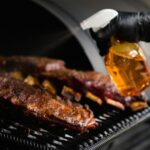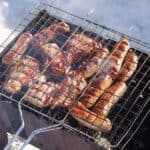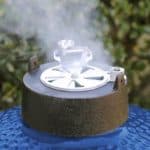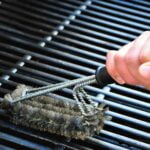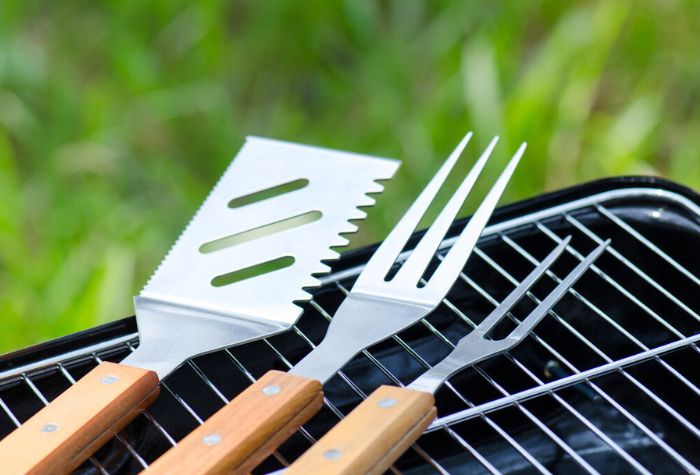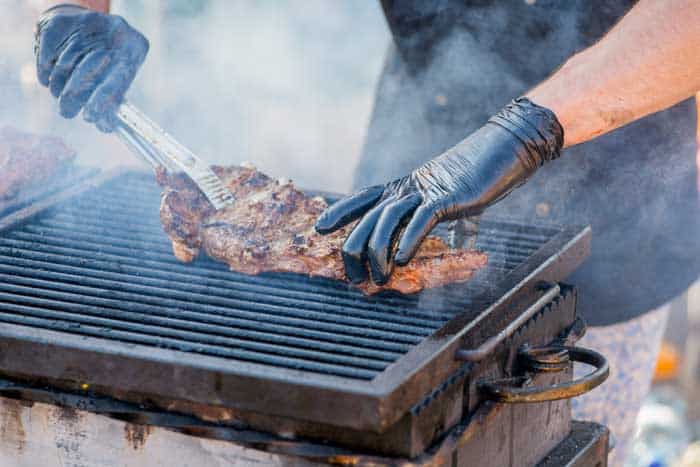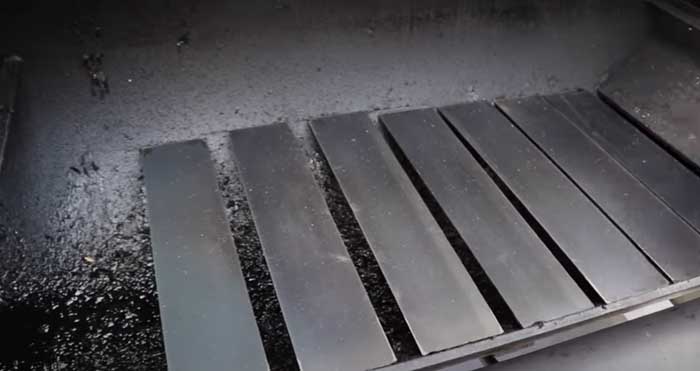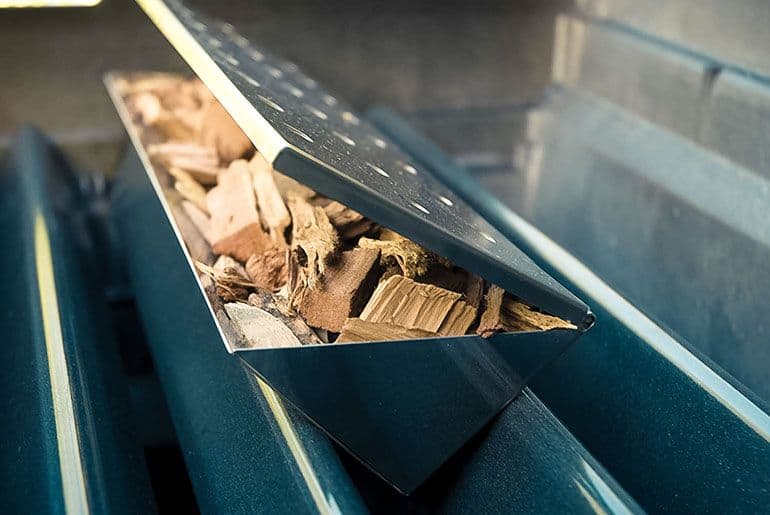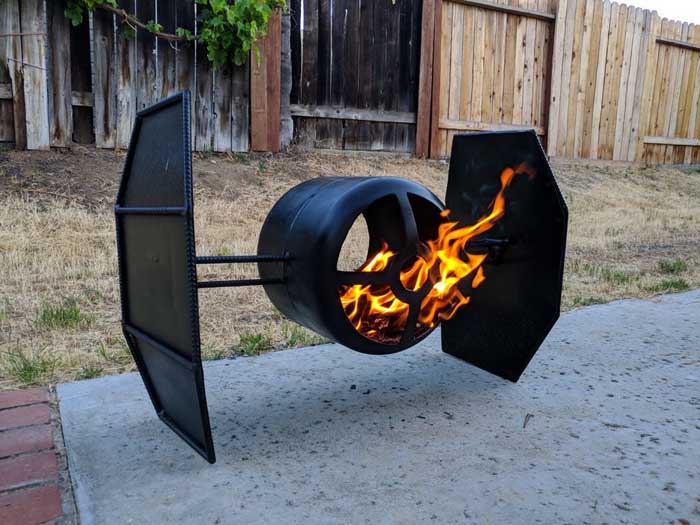Level up your BBQ game with our guide to the essential types of barbecue knives. Sharpen your meat prep skills and slice your smoked brisket like a pro with our breakdown of paring knives, serrated blades, and meat cleavers.
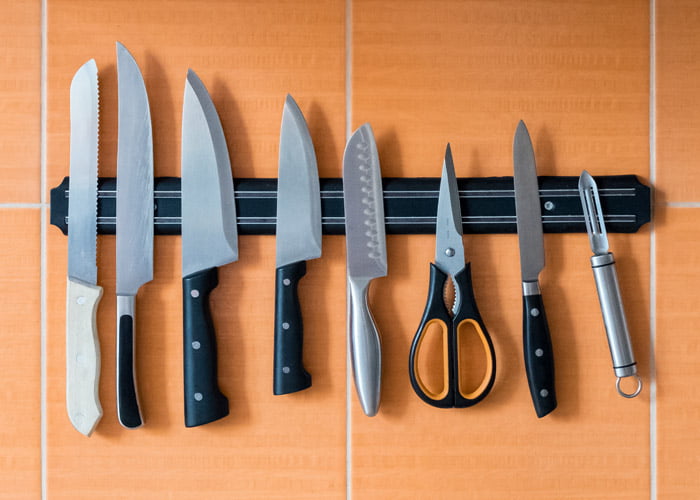
There is a well-known saying that the right tool can make any job easier, and this is certainly the case when it comes to knives.
Technically, you can use any type of well-sharpened knife in most instances when handling barbecue, you’ll notice a huge difference if you start investing in the specific tools needed for specific jobs. Whether you’re slicing tender smoked brisket or frenching a rack of lamb, you need the right knife to make the job as effortless as possible.
With these tools at your disposal, preparing and serving smoked meat or grilled vegetables will be much more enjoyable, and far less of a chore. Here’s a breakdown of the six best types of BBQ knives you should aim to have at hand.
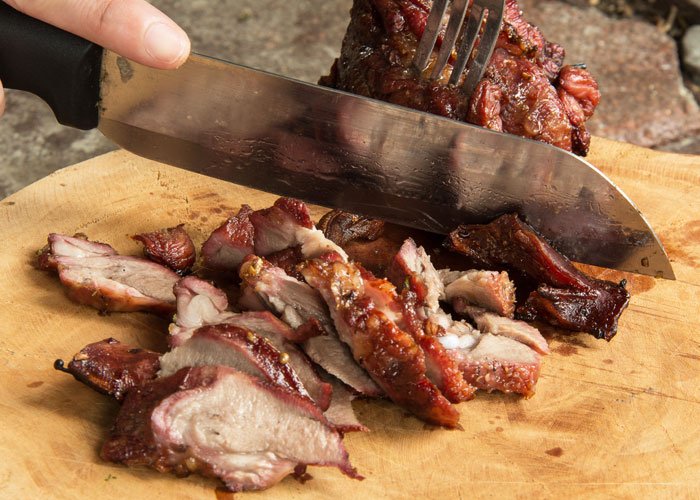
Chef’s Knife
If there was ever such a thing as an all-purpose knife, it’d be the chef’s knife. Perfect for finely slicing cooked meat and crushing garlic cloves, it’s equally adept at disjointing meat as part of your barbecue prep.
The curve of the blade allows for the specific rocking motion that is necessary for chopping and dicing, while a good knife will have a handle that comfortably fits your hand and isn’t overly heavy.
Look out for forged blades that taper towards the tip. These tend to be more durable and require less frequent sharpening. However, this durability can come at a cost, and the knife itself might feel slightly heavy during prolonged use.
Stamped blades, however, feature the same thickness for the length of the blade, and tend to be more affordable and light, but can be more prone to chipping.
Boning Knife
Boning knives have long, thin, flexible blades specifically designed to glide through meat with precision. Wielding one of these will allow you to expertly trim meat and connective tissue as part of your meat preparation, as well as remove the bones sometimes found in pork butt.
As the name suggests, the primary purpose of a boning knife is to remove bones from meat. It is particularly handy when removing delicate bones from chicken and fish.
Boning knives can also be used to create pockets in the meat for stuffing. The blade’s flexibility enables precise trimming around fat pockets and connective tissue, which helps to ensure even cooking and prevent the meat from becoming greasy or tough.
Carving Knife
A carving knife, which has a long, narrow blade with a curved tip, allows you to effortlessly slice cooked meat into thin, elegant portions.
Carving knives are the perfect tools for slicing up cooked roasts, such as beef, lamb, or pork, as well as poultry, such as chicken or turkey. It’s an essential utensil for cutting ham into thin, even portions, for separating pork rib bones, and for carving up a brisket. Pair with a carving fork for best results.
Serrated Knife
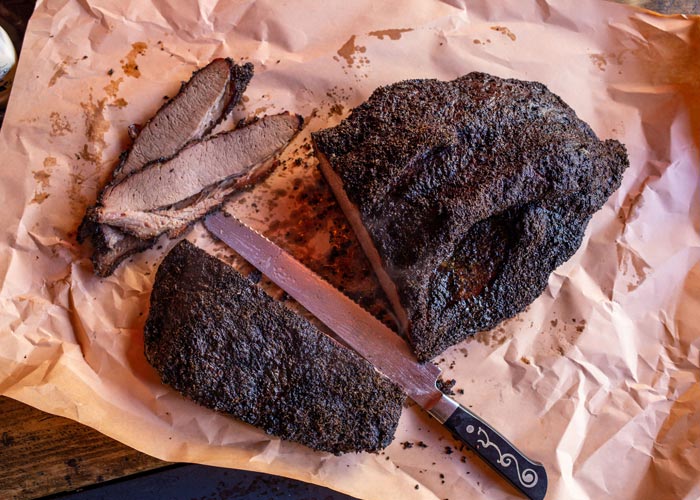
Put the bread away. Serrated knives are ideal for slicing into smoked brisket thanks to their sharp serrations, which are perfectly built for slicing through your brisket’s bark while maintaining a smooth slicing motion without risking tearing the meat into shreds.
While serrated knives are not the most common tool for slicing meat, they are the perfect knife for brisket. A serrated knife is particularly useful when it comes to brisket. Its serrated blade can saw through the tough, fatty exterior of the brisket without tearing the meat. Because the serrated edge helps to distribute the force of the blade more evenly, you can create clean, uniform slices without the risk of the meat becoming torn, mushy, or ragged.
A serrated knife is also your go-to tool if you need to slice tomatoes or grilled vegetables, such as peppers, onions, and zucchini.
Cleaver
Sometimes also referred to as butcher’s knives, cleavers are heavy-duty knives with wide, flat, rectangular blades that are mainly used for chopping through bones and thick cuts of meat. In the context of barbecue, this is particularly useful when cutting down larger cuts of meat, like pork ribs or whole chicken, or removing the shoulder blade often found in pork shoulder.
If you need to chop through bones, a cleaver is your knife of choice. The heavy blade can easily break down bones and chop through dense, heavy pieces of meat. But this isn’t all that it’s good for. You can also use a cleaver to scale a fish and to cut through fruit or vegetables with tough exteriors, such as watermelon or butternut squash.
Paring Knife
This small, versatile knife is a must-have for any serious chef or barbecue lover, as it can be used for a variety of tasks.
A paring knife can be used to peel and dice fruits and vegetables, remove bones from chicken or fish before grilling, make small cuts in meat or poultry to help them absorb marinades, and create decorative garnishes for grilled dishes. Because of the level of precision and control that you can achieve with a paring knife, it can also be used to remove the veins from shrimp, the silverskin from brisket, or the casing from cured meats.
Taking Care of Your Knives
Once you have invested in high-quality knives, it’s important to take proper care of them so that they remain effective and last as long as possible.
Sharpening
Regularly sharpening your knives ensures they can easily cut through meat and vegetables. How often you need to sharpen your knives depends on how frequently you use them, but as a general guideline, you should sharpen them at least once a month.
In general, there are two types of knife sharpeners out there: Whetstone and honing steel. Given the choice, I would always implore you to use a whetstone over cheaper alternatives, like a plastic knife sharpener.
A whetstone is a traditional sharpening tool that consists of a stone with different levels of grit. Try to get one with 1000 grit on one side and 5000 grit on the other. The 1000 side serves as the initial sharpening, fixing dull or damaged blades. The 5000 grit setting then hones the blade to make it glide more smoothly.
Splash a little warm water on the stone first to help lubricate it and prevent overheating of the blade. Always hold the blade at a 20-30 degree angle to the stone and work from the coarsest grit to the finest (in this case, hit the 1000 grit before the 5000).
Cleaning
It is important to clean your knives after every use. Wash them with warm, soapy water and dry them thoroughly with a soft cloth. Avoid putting your knives in the dishwasher, as the heat and harsh chemicals can damage the blades.
Storage
Correctly storing your knives will help protect them from damage and keep them sharp. Store your knives in a designated knife block or on a magnetic knife strip. Avoid storing your knives in a drawer, as this can cause them to knock against each other and become dull.
